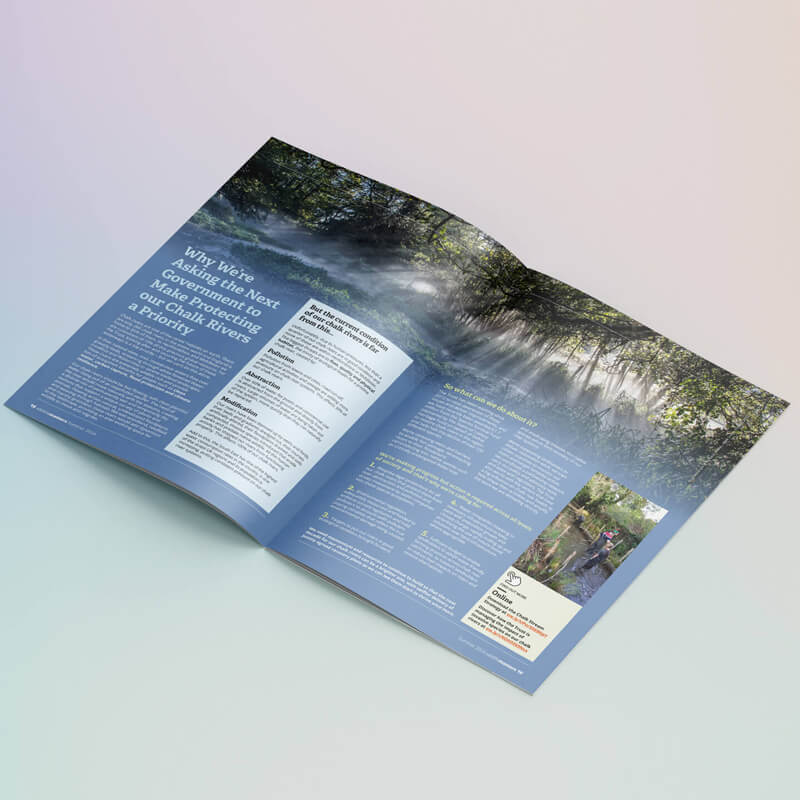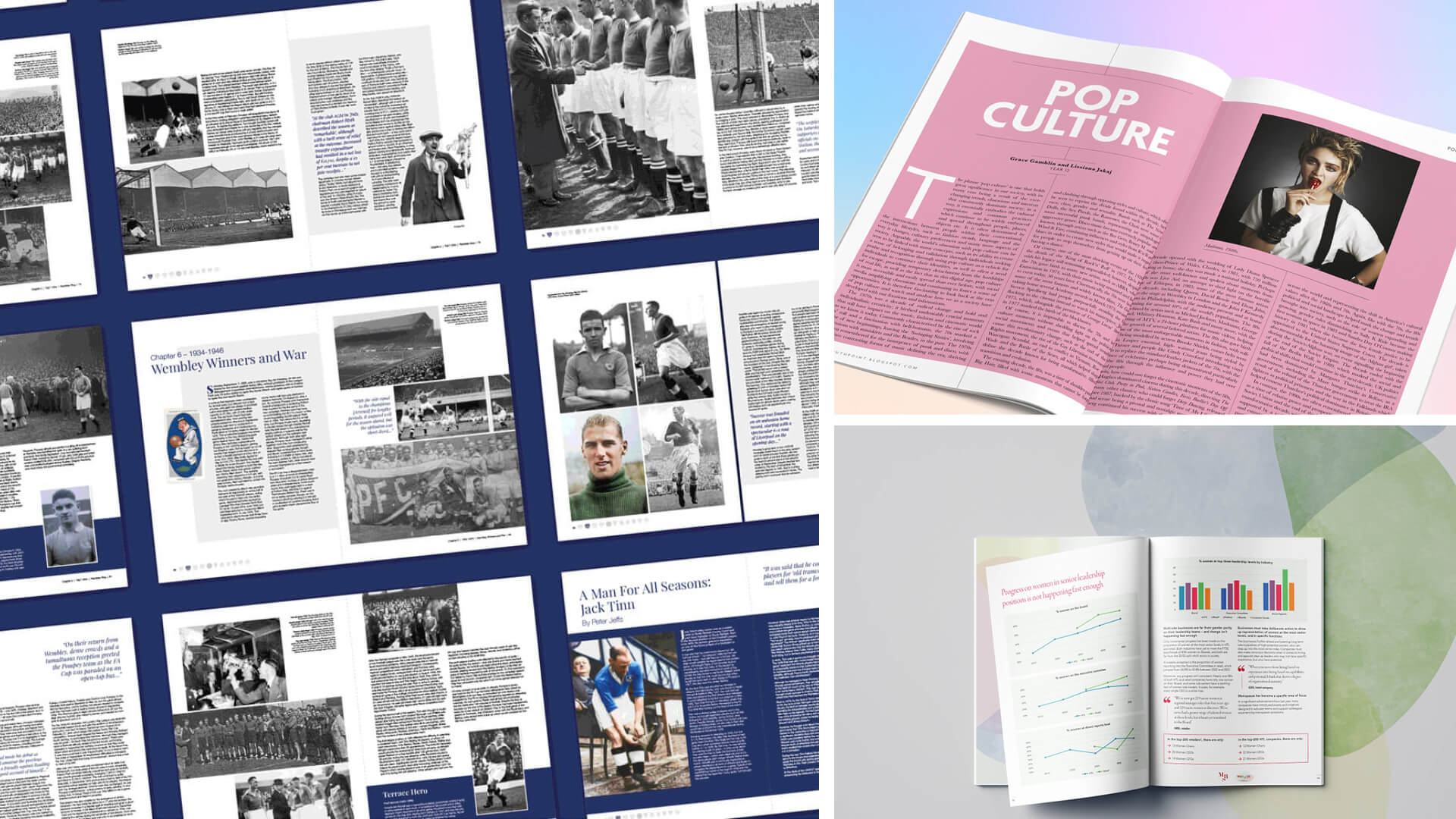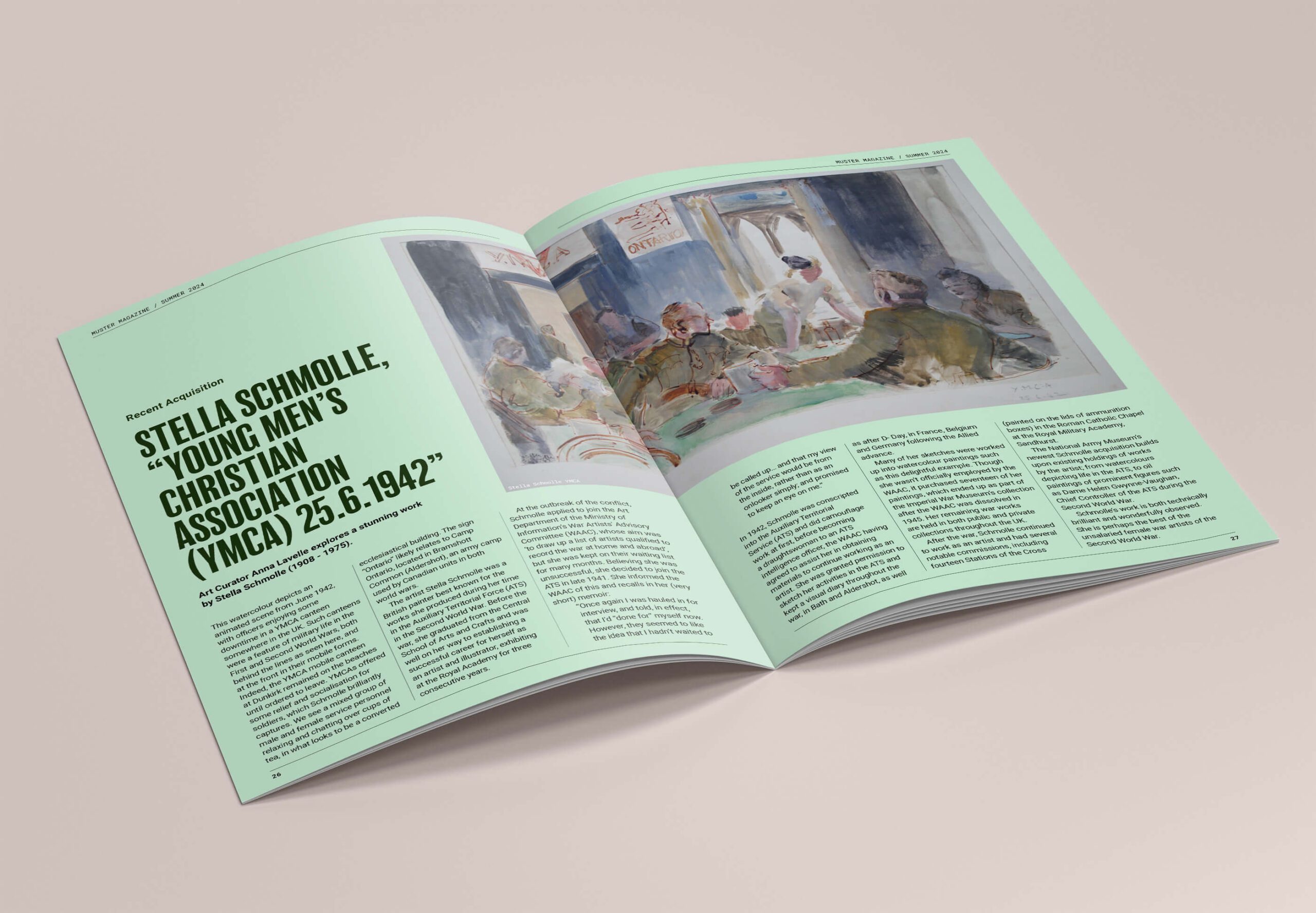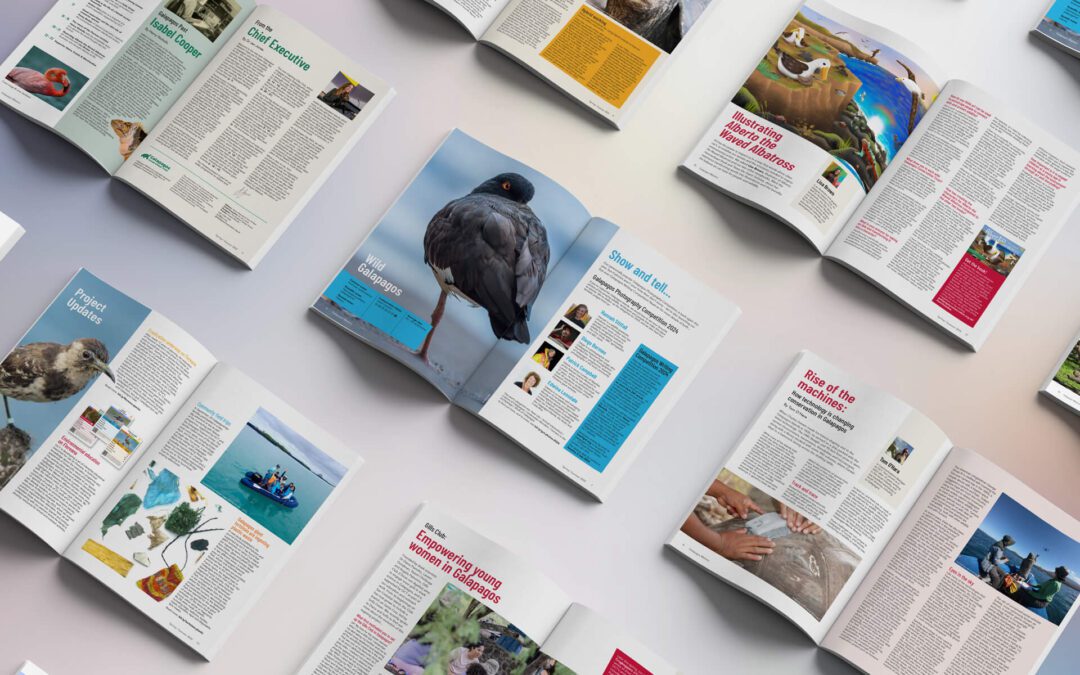Contents
Design grabs attention, copy keeps it
4 reasons why copywriting matters in visual communication
3 things to remember when you’re looking at copy and design
The benefits of effective copywriting
10 practical tips for integrating copy and design effectively
What’s next
FAQs
Follow us
Visual communication is an art. It’s about crafting images that tell a story, evoke emotions, and persuade. But there’s a secret weapon that can take visual communication from good to great: effective copywriting. Let’s dive into how powerful copy can enhance your visuals and ensure your message hits the mark every time.
Design grabs attention, copy keeps it
Think of visuals and copy as dance partners. When they move in sync, they create something beautiful. Visuals grab attention; copy keeps it. Together, they make sure your message is not just seen but understood and remembered. Read about the marriage of copy and design here.
Key Takeaway: Always aim for balance. Neither visuals nor copy should outshine the other. They must work together in harmony.

4 reasons why copywriting matters in visual communication
Understanding the partnership between visuals and copywriting can significantly enhance your communication efforts. By applying the practical tips and strategies discussed, businesses and individuals can:
1. Increase Engagement: Well-integrated visuals and copy capture and retain audience attention more effectively.
2. Boost Conversions: Clear and compelling copy drives viewers to take desired actions, improving conversion rates.
3. Enhance Brand Perception: Consistent and well-crafted copy alongside cohesive visuals builds a strong and trustworthy brand identity.
4. Achieve Better ROI: Investment in quality copywriting and design leads to better performance of marketing materials, offering higher returns.
Ultimately, mastering the dance between visuals and copy can lead to more effective communication, stronger connections with your audience, and tangible business outcomes.
3 things to remember when you’re looking at copy and design
- Clarity: Visuals can be interpreted in many ways. Clear, concise copy ensures the viewer understands the intended message.
- Emotion: While visuals evoke emotions, words give those emotions direction. They tell the viewer how to feel and why.
- Action: Effective copy drives action. It’s the nudge that turns a viewer into a customer.
%
People often read only 20% to 28% of the content on a page
%
by Unbounce highlighted that optimizing landing page copy led to a 38% increase in conversions
%
consistent brand presentation across all platforms can increase revenue by up to 23%
The benefits of effective copywriting
- Increased Engagement: Studies indicate that well-written copy can significantly boost engagement. For instance, compelling copy paired with strong visuals can enhance viewer interaction and content retention. According to various sources, maintaining clear and concise messaging is crucial, as people often read only 20% to 28% of the content on a page. This means you should make your copy scannable for the average reader. (Source: Nielsen Norman Group)
- Improved Conversion Rates: Effective copywriting directly impacts conversion rates. A case study by Unbounce highlighted that optimizing landing page copy led to a 38% increase in conversions (Source: Unbounce). This demonstrates that carefully crafted copy can turn casual visitors into committed customers.
- Enhanced Brand Perception: Consistent and compelling copy helps build a strong brand identity. A report by Lucidpress shows that consistent brand presentation across all platforms can increase revenue by up to 23%. This consistency in messaging fosters trust and recognition among your audience

10 practical tips for integrating copy and design effectively
1. Start with the Message
Before diving into design or copy, nail down your core message. What do you want to communicate? Why does it matter? What do you want the viewer to do next?
Pro Tip: Use simple language. If a well-educated 10-year-old can understand it, you’re on the right track. Copy that is written at this level of reading ability receives 36% more responses (Source: Boomerang)
2. Keep It Short, Sweet and focused
No one likes to read walls of text. Break down your message into bite-sized nuggets. Use bullet points, short sentences, and clear headings. The ideal length of your headlines is about 6 words. (Source: Buffer)
Example: Instead of saying, “Our product is innovative and revolutionizes the way you work,” try, “Innovative. Revolutionary. Game-changing.”
Note: This doesn’t mean you can’t put a lot of content on the page – Long landing pages can actually generate 220% more leads (Source: Marketing Experiments)
3. Design with Copy in Mind
When designing, think about where your copy will go. Use white space to your advantage and ensure the text is legible. A beautiful design is useless if the copy gets lost in it.
Every landing page should promote a single offer. The headline, copy, and even the design should focus on that offer. When you have 2 or more offers on a landing page, you’ll confuse readers. Since most viewers only need a single offer, they’ll likely leave a page that switches between many offers. Having more than a single offer on a landing page can decrease conversion rates by 266% (Source: Wishpond)
Tip: Test your designs with different types of copy. Make sure it works with headlines, subheadings, and body text.
4. Use Hierarchy to Guide the Viewer
Not all information is created equal. Use typography, colours, and sizes to create a hierarchy that guides the viewer’s eye.
Example: Bold headlines, colorful call-to-actions, and smaller body text help the viewer know where to look first and what to do next. For instance, a headline in a large, bold font at the top, followed by a subheading in a slightly smaller font, and body text in an even smaller font can effectively direct the reader’s attention.
Tip: Utilise visual hierarchy to prioritize information. Use size and colour to highlight the most important elements. Test different layouts to see which one directs the viewer’s eye most effectively.
5. Stay Consistent
Not all information is created equal. Use typography, colours, and sizes to create a hierarchy that guides the viewer’s eye.
Example: Bold headlines, colorful call-to-actions, and smaller body text help the viewer know where to look first and what to do next. For instance, a headline in a large, bold font at the top, followed by a subheading in a slightly smaller font, and body text in an even smaller font can effectively direct the reader’s attention.
Tip: Utilise visual hierarchy to prioritize information. Use size and colour to highlight the most important elements. Test different layouts to see which one directs the viewer’s eye most effectively.
6. Be Personalised
Personalised calls to action (CTAs) are 202% more effective and increase conversion. (Source: Hubspot) Unbounce increased CTR by 90% by simply switching from “Start your free 30-day trial” to “Start my free 30-day trial.”
Tip: Use personalisation techniques in your copy to address the reader directly. Incorporate the reader’s name or specific interests if possible to make the content feel more tailored.
7. Check spelling and grammar
A professional-looking website with flawless copy versus one with multiple spelling errors can significantly impact credibility and trustworthiness. 59% of users would avoid buying from a business that made obvious spelling/grammar mistakes (Source: Realbusiness)
Tip: Always proofread your content before publishing. Use tools like Grammarly or Hemingway to catch errors and improve readability. Consider having multiple people review your content to ensure it’s error-free.
8. Include the “So What
When you provide a reason for readers to take action, you make your message more compelling. Including the word “because” along with a reason can increase actions from 60% to 94%. (Source: Search Engine Journal)
Example: Instead of just saying, “Sign up for our newsletter,” you can say, “Sign up for our newsletter because you’ll get exclusive tips and offers.”
Tip: Always explain why your audience should take the action you’re suggesting. Give them a reason to care and to act immediately.
9. Add Social Proof
Placing the logos of business customers on a company website can increase conversions by as much as 400%. (Source:Hubspot) People are more likely to trust your brand if they see that others do too.
Example: Use testimonials, reviews, case studies, or the number of satisfied customers to build trust. For instance, “Join over 10,000 happy customers who trust our service.”
Tip: Display social proof prominently on your landing pages. Use real customer photos and authentic quotes to enhance credibility. Experiment with different types of social proof to see what resonates best with your audience.
10. Create a checklist to review your designs and copy.
In the fast-paced world of design, ensuring that every project communicates effectively and resonates with its intended audience is crucial. A design review checklist is an indispensable tool that helps maintain consistency, clarity, and quality across all your design work. By systematically evaluating key aspects of your design, you can ensure that your message is clear, your visuals are impactful, and your content is engaging. Here’s why creating and using a design review checklist is so important.

What’s next?
Review Your Current Materials: Look at your existing visuals and copy. Are they working together? Where can you improve? Use the checklist highlighted above.
Practice: Start small. Integrate these tips into your next social media post or website update. Start small by integrating these tips into your next social media post or website update. Here’s a step-by-step approach:
- Choose a project: Select a small project, like a social media post or a landing page update.
- Apply the tips: Use the practical tips provided earlier to balance your visuals and copy.
- Monitor the results: Track engagement and feedback to see how well the changes work.
Example:
- Before and After: Create a “before and after” comparison to visualize improvements.
- A/B Testing: Conduct A/B tests to determine which versions resonate more with your audience.
Learn: Keep refining your skills. Stay updated with the latest trends in visual communication and copywriting. By mastering the dance between visuals and copy, you can ensure your message resonates with your audience every time. Happy creating!
Continuously refine your skills by staying updated with the latest trends in visual communication and copywriting. Here’s how:
- Follow industry blogs and publications: Regularly read content from reputable sources like HubSpot, Canva’s Design School, and Copyblogger.
- Attend webinars and workshops: Participate in events that focus on the latest trends and techniques.
- Engage in online courses: Platforms like Coursera and Udemy offer courses on copywriting and design.
- Join professional communities: Engage with communities on LinkedIn or industry-specific forums to exchange ideas and stay informed about new practices.
Remember visual communication enhanced by effective copywriting is a powerful tool. It’s not just about looking good; it’s about conveying your message clearly and persuasively.

FAQs
How do I balance visuals and copy in my current marketing materials?
Balancing visuals and copy is key to creating effective marketing materials. At The Graphic Design House, we ensure that your visuals and copy complement each other rather than compete. We start by understanding the core message you want to convey and then create a layout that gives both elements the space they need to shine. Visuals should grab attention and guide the reader, while the copy should be concise and support the imagery. Consistent use of branding elements, such as typography and colour, helps create harmony between visuals and text, ensuring a cohesive and impactful presentation.
What are some examples of successful campaigns that effectively integrate copy and design?
We have worked on numerous successful campaigns where copy and design work seamlessly together to deliver powerful messages. For instance, we recently completed a campaign for a leading non-profit organization where bold visuals were paired with concise, emotionally-driven copy. This combination not only captured attention but also spurred action, resulting in a significant increase in donations and community engagement. Another example is a rebranding project for a technology company where minimalist design and clear, benefit-oriented copy helped reposition the brand in a competitive market, leading to them being featured on The BBC and in The Guardian, and generating over 650+ leads for this niche technology in less than 12 months.
Can you help create a style guide for my brand?
Absolutely. We specialize in creating comprehensive style guides that serve as a blueprint for your brand’s visual and verbal identity. A style guide from The Graphic Design House includes detailed instructions on logo usage, colour palettes, typography, imagery, tone of voice, and more. We can also provide an executive one-page summary of key information such as colours, and fonts if needed. Style guides ensure consistency across all your marketing materials and help your team and external partners maintain a cohesive brand presence. Whether you’re starting from scratch or updating an existing brand, we can tailor the style guide to fit your specific needs.
What tools or software do you recommend for creating visually engaging content?
For creating visually engaging content, we recommend tools like Adobe Creative Suite, which includes industry-standard software such as Photoshop, Illustrator, and InDesign for graphic design. Canva is also a great option for those who need a user-friendly platform for creating quick and polished visuals – we often provide templates for our clients that they can adapt themselves later. For video content, Adobe Premiere Pro and Final Cut Pro are excellent choices. Additionally, tools like Figma or Sketch are ideal for collaborative design projects, especially in digital environments. These tools offer robust features that allow for creativity while maintaining brand consistency.
How can I test if my visuals and copy are working well together?
Testing the effectiveness of your visuals and copy is crucial to ensuring they resonate with your audience. We recommend starting with A/B testing, where you create two versions of your marketing material with slight variations in visuals and copy. By analyzing which version performs better, you can gain insights into what appeals most to your audience. Additionally, gathering feedback through focus groups or surveys can provide qualitative insights. Analytics tools, such as Google Analytics for digital content or engagement metrics for social media, can also help measure the effectiveness of your materials. At The Graphic Design House, we can assist in setting up these tests and interpreting the results to refine your marketing strategies.
More insights

Publication design that works for your brand and audience
Explore print and digital publication design services, key elements to consider and the trends shaping how brands create magazines, brochures and reports.

A creative design agency that brings brands to life
Work with a UK design agency that combines creative thinking with close collaboration. Print, mail and design expertise, all under one roof.

Designing with AI: useful tool or risky shortcut?
AI tools offer speed and spark creativity, but we explore why they’re no replacement for original thinking and skilled design insight.
